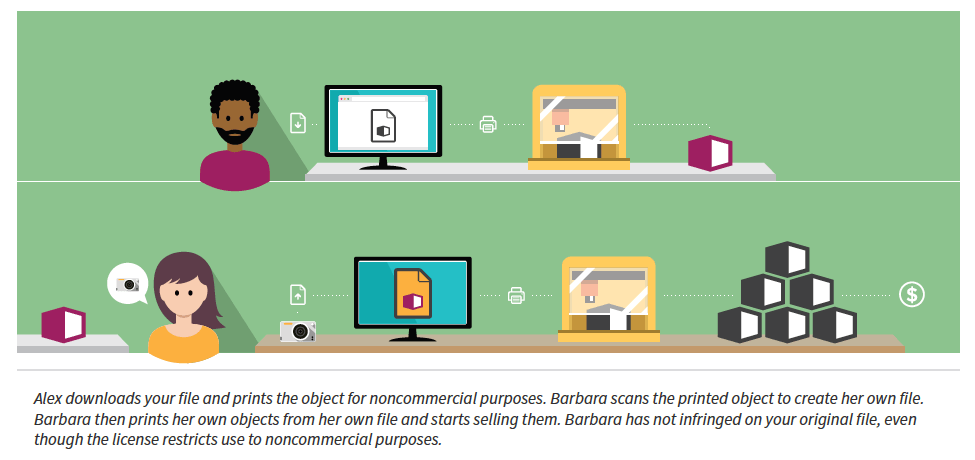
In 2015, Michael Weinberg released a white paper that really got into the nitty gritty of what is actually possible in terms of licensing, and specifically in terms of open licenses, like the ones offered through Creative Commons. This is the kind of advice you should take to heart because it comes from someone with scads of legal expertise in 3D printing, no other than Shapeways’ general counsel.
The second step in the copyright journey is to make sure that you understand what it is that a copyright does, and does not, do. This is an area that is often a quagmire of confusion as people are prone to believe that holding a copyright, in any form, on a digital file bestows upon them despotic control over the use of that file and/or the object that it is used to create. As Weinberg explains:
“Understanding what your copyright allows you to control – and what remains out of your control – is critical to thinking about how to license things. For example, you may have a copyright on a file that represents an object, but not on the object itself. In that case, you should be clear-eyed about the fact that even the most restrictive license on the file will not stop people from reproducing the object without your permission.”
What’s best about this white paper is that it is an easy read, it’s well written, well organized, and well beyond the normal dry instruction manual issued to lull you to sleep before you can act. The real lesson here though is that none of this is as straightforward as we’d like to think and it’s going to be quite some time before that changes as so much of the ground covered by what is made possible through these technologies is really new territory. So, if you are sitting on something that is going to make you the next millionaire, you might want to get some expert advice. Discuss in the Licensing forum at 3DPB.com.